Your temperature (TEM-pruh-chur) is how warm or cold your body is. Normal temperature for a child is 98°F to 99°F or 37°C. The small circle (°) means “degrees.” Anything over 100.4°F or 38°C is a fever. (See “Words to Know” for “F” and “C.”)
There are many ways to check your child's temperature. Always use a digital (DIJ-uh-tul) thermometer (thur-MOM-uh-tur). These show the temperature in numbers in a little window.
Don’t use a mercury thermometer (the kind with silver liquid inside). They are dangerous if they break.
This is how you read and say the temperature:
100.2° This means “One hundred point two degrees.” 102° This means “One hundred and two degrees.”
Be sure to read it carefully. There is a big difference between 100.2° and 102°.
In Child's Bottom (Rectal)
1. Turn on the thermometer.
2. Put some lubricating (LOO-bruh-kay-ting) jelly on the small end to help it slide in. KY Jelly, Surgilube, and Vaseline are brands of lubricating jelly.
3. Lay your child across your lap or on something firm, face up or face down.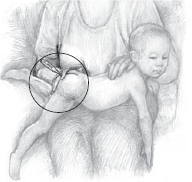
4. Put one hand on your child's back if the child is face down.
If the child is face up, bend your child's legs to his or her chest. Rest your free hand against the backs of the thighs. This will help your child hold still.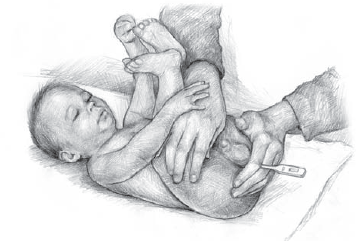
5. Gently put the small end of the thermometer in your child's bottom where poop comes out (rectum). Put it in 1/2-inch deep.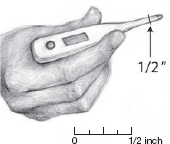
6. Cup your hand over your child's bottom. Then hold the thermometer between the base of 2 fingers so it doesn't slip out.
7. Take it out after a minute or so, or when it signals that it is done. It may beep, stop flashing, or light up. Read the number.
In Child's Mouth (Oral)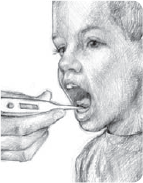
1. Turn on the thermometer.
2. Put the small end of the thermometer under your child's tongue. Put it as far back as you can without hurting your child.
3. Have your child close his or her lips around the thermometer. Hold it there.
4. Take it out after a minute or so, or when it signals that it is done. It may beep, stop flashing, or light up. Read the number.
Under Child's Arm (Axillary)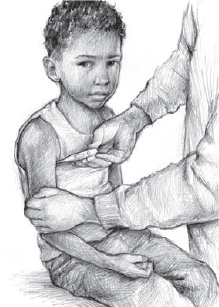
1. Turn on the thermometer.
2. Put the small end of the thermometer in your child's armpit.
3. Hold your child's arm tightly against his or her side. With your other hand, hold the thermometer in place.
4. Take it out after a minute or so, or when it signals that it is done. It may beep, stop flashing, or light up. Read the number.
Taking Temperature by Age
Child's Age |
Ways to Take Temperature |
|
Newborn to 3 months old
|
In child's bottom (rectal)
|
|
3 months to 3 years old
|
In child's bottom (rectal) or under child's arm (axillary)*
|
|
4 to 5 years old
|
In child's mouth (oral) or bottom (rectal) or under child's arm (axillary)*
|
|
Older than 5 years
|
In child's mouth (oral) or bottom (rectal) or under child's arm (axillary)*
|
*Taking your child's temperature in the mouth or bottom gives a better reading than taking it under the arm.
Tips
· Wash the small end of the thermometer before and after using it. Use soap and cool water, not hot.
· Label the thermometer “oral” or “rectal.” Don't use the same thermometer in both places. (You can use both kinds under the arm.)
· If your child has had a hot or cold drink, wait 15 minutes before taking your child's temperature by mouth.
· If you have questions about other kinds of thermometers, like ear or temporal (tem-PUR-ul) artery thermometers, ask your child's doctor.
· Remember: A fever is anything over 100.4°F or 38°C.
Words to Know
“F” stands for Fahrenheit (FER-un-hyt)— a scale of numbers to show temperature. Used mostly in the United States.
“C” stands for Centigrade (SEN-tuh- grayd)—a different scale of numbers to show temperature. Used mostly outside the United States.
Copyright © 2008
